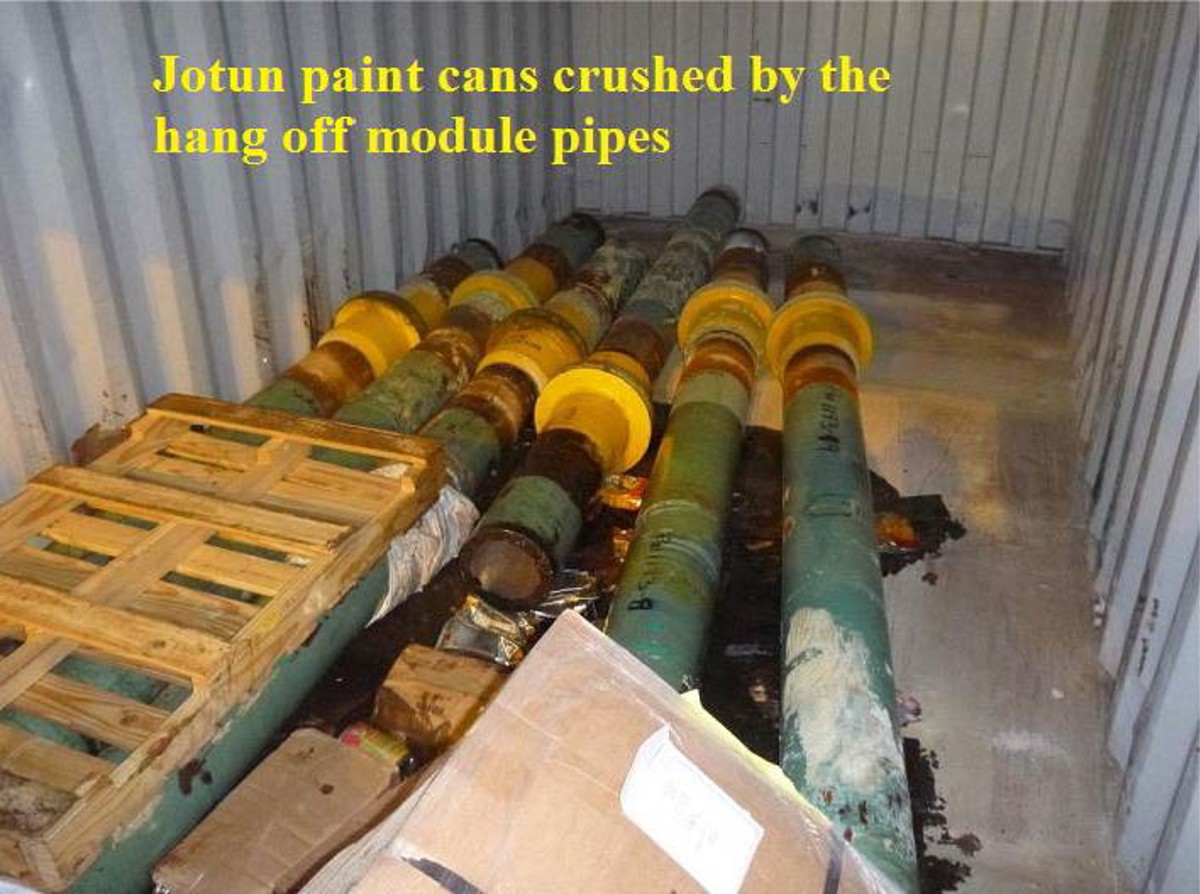Poor cargo stowage: material damage on container
- Safety Flash
- Published on 21 January 2014
- Generated on 29 April 2025
- IMCA SF 01/14
- 1 minute read
Jump to:
A Member has reported an incident in which a freight container was delivered offshore with damaged internal contents, owing to poor stowage.
What happened?
When the doors of the container were opened, there was a strong smell of paint. It was discovered that heavy pipes had been loaded into the container but had not been stowed properly or lashed down. The pipes had moved during transit and had crushed part of the other cargo, including a number of cans of paint and some welding consumables.

Inside of freight container and damaged cargo
Our Member noted the following:
This is a good example of the need for proper stowage and lashing. Cargo in a freight container that is not lashed down properly can easily shift during transit and damage itself or other cargo. In this example it is cans of paint, but it could easily cause a much more serious hazard of dropped or falling objects when the doors are opened, as well as a potential spill to the environment.
IMCA Safety Flashes summarise key safety matters and incidents, allowing lessons to be more easily learnt for the benefit of the entire offshore industry.
The effectiveness of the IMCA Safety Flash system depends on the industry sharing information and so avoiding repeat incidents. Incidents are classified according to IOGP's Life Saving Rules.
All information is anonymised or sanitised, as appropriate, and warnings for graphic content included where possible.
IMCA makes every effort to ensure both the accuracy and reliability of the information shared, but is not be liable for any guidance and/or recommendation and/or statement herein contained.
The information contained in this document does not fulfil or replace any individual's or Member's legal, regulatory or other duties or obligations in respect of their operations. Individuals and Members remain solely responsible for the safe, lawful and proper conduct of their operations.
Share your safety incidents with IMCA online. Sign-up to receive Safety Flashes straight to your email.